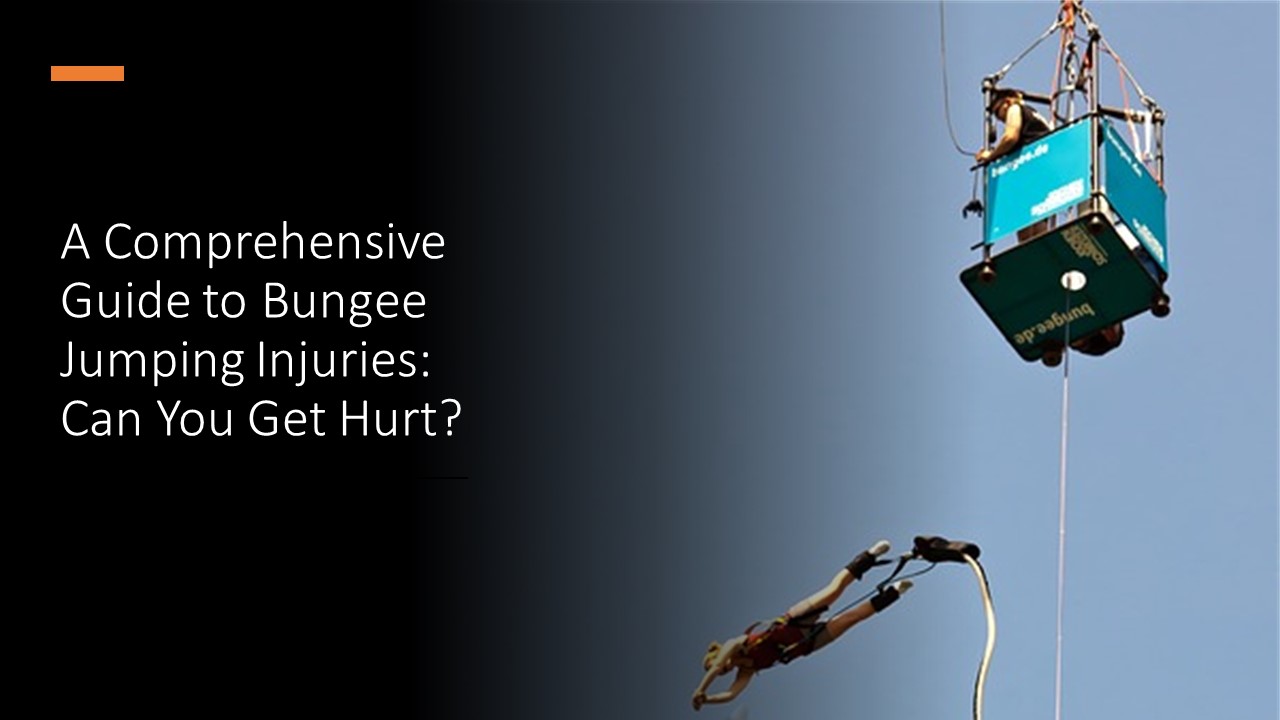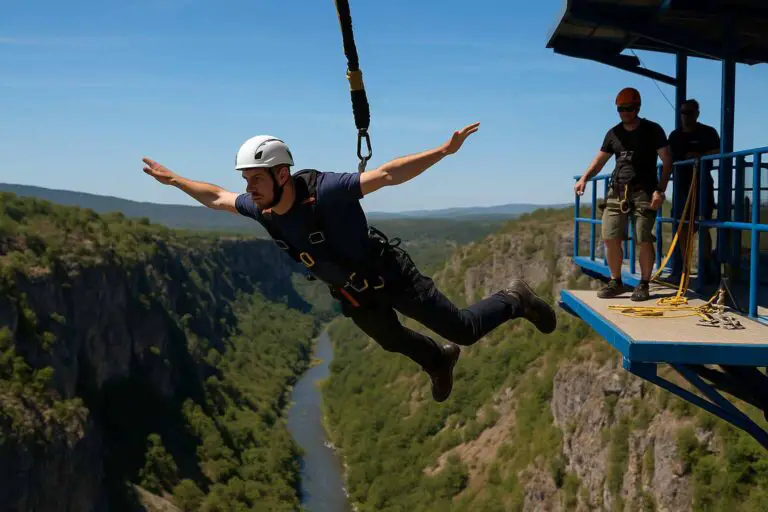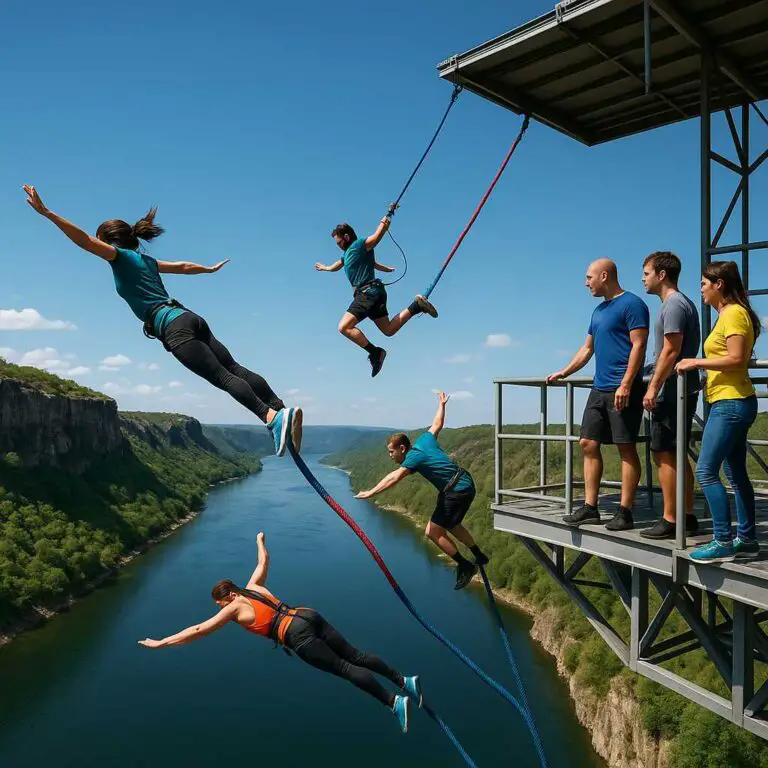Suppose you’ve been curious about the potential risks of bungee jumping or are considering taking the leap yourself. In that case, you’re in the right place. As someone who has experienced the exhilaration of bungee jumping firsthand, I understand the mix of excitement and trepidation that comes with it. A common question is, can you get hurt while bungee jumping?
Yes, bungee jumping can lead to injuries like whiplash or sprains. But with proper safety measures, certified operators, and reliable equipment, it’s generally a safe adventure. Just make sure you’re jumping with a reputable company.
In this guide, I’ll explore the world of bungee jumping injuries, providing everything you need to know before taking that leap of faith. My goal isn’t to scare you away from this incredible sport but to equip you with the knowledge necessary to make informed decisions and enjoy your experience safely.
The Thrill of Bungee Jumping
There’s nothing quite like the heart-pounding thrill of bungee jumping. Picture this: you’re standing on the edge of a towering bridge or platform, your heart racing and adrenaline surging. Below, the world seems both distant and intensely natural. It’s an extraordinary mix of fear and excitement, and you’re about to experience something unforgettable.
When I took my first bungee jump, I felt a rush of emotions. The jumpmaster gave me a reassuring nod, and without hesitation, I leaped into the air. For a moment, there’s a weightless sensation before the bungee cord stretches, propelling you back up. It’s an indescribable feeling. You’ve conquered your fears and embraced the unknown.
Bungee jumping pushes us beyond our comfort zones and teaches us that we can do more than we think. The thrill is addictive, and the variety of scenic locations worldwide adds to its allure. However, with this excitement comes the responsibility to stay safe.
Understanding the Safety Measures
Safety is paramount in bungee jumping. Here’s how certified operators ensure your well-being:
- Always choose a reputable, certified bungee jumping company. Look for positive reviews and a strong safety record.
- High-quality gear is essential. The jumpmaster securely fastens a harness and bungee cord, thoroughly inspecting all equipment before each jump.
- Professional companies have strict double-checking protocols to ensure everything functions properly.
- Adhering to weight limits ensures your safety. Some companies may also check your health to rule out any medical conditions that could pose a risk.
- Listen carefully to the jumpmaster’s guidance. They will instruct you on how to position yourself and follow safety protocols.
- The bungee cord length is meticulously calculated based on your weight and the jump height, ensuring a controlled deceleration.
- Regular inspections of the jumping platform ensure structural integrity, and jumps may be canceled if weather conditions are unsafe.
By following these measures, you can enjoy the thrill of bungee jumping while minimizing the risks.
Potential Injuries: Know the Risks
While bungee jumping is exhilarating, it comes with certain risks. Here are some potential injuries and how to minimize them:
- Physical Injuries
- Whiplash & Neck Strains: The sudden deceleration during the fall and rebound can strain your neck.
- Tip: Keep your head aligned with your body and maintain a relaxed posture.
- Back Injuries: Improper landing or uncontrolled bouncing can lead to back strains.
- Tip: Warm up before the jump and slightly bend your knees upon landing.
- Ankle & Leg Sprains: Landing incorrectly can lead to sprains.
- Tip: Ensure your ankles are securely fastened in the harness and follow the jumpmaster’s instructions.2Medical Conditions & Health Risks
- Heart Conditions: Bungee jumping can increase your heart rate and blood pressure, which may be risky for those with heart conditions.
- Tip: Consult your doctor if you have a pre-existing heart condition.
- High Blood Pressure: Individuals with hypertension should avoid bungee jumping due to the temporary spike in blood pressure.
2. Pregnancy
Bungee jumping is not safe for pregnant women due to the potential risks to both mother and baby.
3. Psychological Impact
- Fear & Anxiety: It’s natural to feel anxious before the jump.
- Tip: Use relaxation techniques like deep breathing or visualization to calm your nerves.
- Post-Jump Emotional Response: After the jump, you may experience a mix of emotions, from euphoria to vulnerability.
Minimizing the Risks
Here are a few ways to minimize the risks and ensure a safe, enjoyable jump:
- Choose a reputable company with a strong safety record.
- Follow the jumpmaster’s instructions closely.
- Be honest about your weight and health conditions before the jump.
- Warm up your body with light exercises to avoid strains or sprains.
- Monitor weather conditions and avoid jumping in adverse weather.
- Listen to your instincts, and don’t jump if you’re unready.
Aftercare and Recovery
After your bungee jump, it’s essential to focus on recovery. Here are some aftercare tips:
- Rest and Hydrate: Allow your body time to recover.
- Address Minor Injuries: Treat any bruises or strains with appropriate first aid.
- Avoid Strenuous Activities: Give your body a chance to recover fully.
- Embrace Self-Care: Mentally process the experience and share it with others.
- Seek Medical Attention if Necessary: If any discomfort persists, consult a doctor.
Who Should NOT Do Bungee Jumping: A Comprehensive Guide for Safety
Conclusion
Bungee jumping offers an unparalleled thrill and a chance to conquer your fears. While there are risks, they can be minimized by choosing reputable operators and following safety protocols. With the proper preparation, bungee jumping is a safe and unforgettable experience.
To answer the question, can you get hurt while bungee jumping? Yes, injuries can happen, but by taking the necessary precautions, the risks are significantly reduced.
So, are you ready to take the leap?
I recommend you to read this article next: Bungee Jumping: The Do’s And Don’ts For An Epic Adventure








